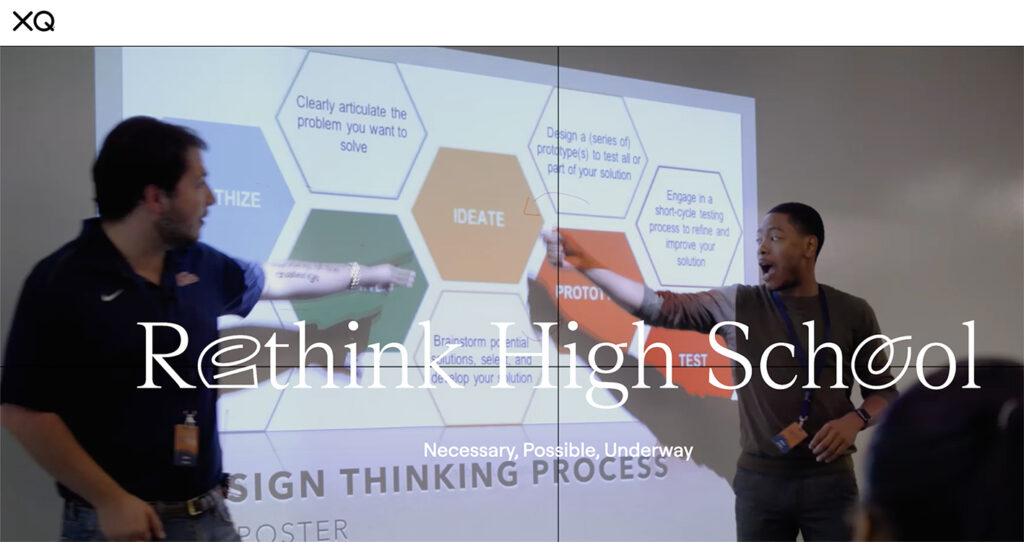How to do school with NotebookLM:
1. Record audio from class on your phone
2. Keep laptop closed. Just jot down short phrases to describe most important points
3. Upload audio and PDF scan of notes to NotebookLM
4. Ask Notebook to expand your notes with details from recording… pic.twitter.com/wfmCTJfRba— Steven Johnson (@stevenbjohnson) September 26, 2024
Unlock deeper insights with NotebookLM: Now analyze YouTube videos & audio files alongside your docs. Plus, easily share your Audio Overview with a new sharing option!
Learn more: https://t.co/j1da9565aZ pic.twitter.com/9sULXX5Jud
— labs.google (@labsdotgoogle) September 26, 2024
According to Notebook LM on this Future U podcast — Searching for Fit: The Impacts of AI in Higher Ed — here are some excerpts from the generated table of contents:
Part 1: Setting the Stage
I. Introduction (0:00 – 6:16): …
II. Historical Contextualization (6:16 – 11:30): …
III. The Role of Product Fit in AI’s Impact (11:30 – 17:10): …
IV. AI and the Future of Knowledge Work (17:10 – 24:03): …
V. Teaching About AI in Higher Ed: A Measured Approach (24:03 – 34:20): …
VI. AI & the Evolving Skills Landscape (34:20 – 44:35): …
VII. Ethical & Pedagogical Considerations in an AI-Driven World (44:35 – 54:03):…
VIII. AI Beyond the Classroom: Administrative Applications & the Need for Intuition (54:03 – 1:04:30): …
IX. Reflections & Future Directions (1:04:30 – 1:11:15): ….
Part 2: Administrative Impacts & Looking Ahead
X. Bridging the Conversation: From Classroom to Administration (1:11:15 – 1:16:45): …
XI. The Administrative Potential of AI: A Looming Transformation (1:16:45 – 1:24:42): …
XII. The Need for Intuitiveness & the Importance of Real-World Applications (1:24:42 – 1:29:45): …
XIII. Looking Ahead: From Hype to Impactful Integration (1:29:45 – 1:34:25): …
XIV. Conclusion and Call to Action (1:34:25 – 1:36:03): …
The future of language learning — from medium.com by Sami Tatar
Most language learners do not have access to affordable 1:1 tutoring, which is also proven to be the most effective way to learn (short of moving to a specific country for complete immersion). Meanwhile, language learning is a huge market, and with an estimated 60% of this still dominated by “offline” solutions, meaning it is prime for disruption and never more so than with the opportunities unlocked through AI powered language learning. Therefore — we believe this presents huge opportunities for new startups creating AI native products to create the next language learning unicorns.
I never imagined I’d learn so much without paying for a course.
Here are 8 ChatGPT-4 prompts I wish I’d found sooner: pic.twitter.com/b9gqEGInSd
— Ryan Hart ? (@thisdudelikesAI) October 5, 2024
“The Broken Mirror: Rethinking Education, AI, and Equity in America’s Classrooms” — from nickpotkalitsky.substack.com by JC Price
It’s not that AI is inherently biased, but in its current state, it favors those who can afford it. The wealthy districts continue to pull ahead, leaving schools without resources further behind. Students in these underserved areas aren’t just being deprived of technology—they’re being deprived of the future.
But imagine a different world—one where AI doesn’t deepen the divide, but helps to bridge it. Technology doesn’t have to be the luxury of the wealthy. It can be a tool for every student, designed to meet them where they are. Adaptive AI systems, integrated into schools regardless of their budget, can provide personalized learning experiences that help students catch up and push forward, all while respecting the limits of their current infrastructure. This is where AI’s true potential lies—not in widening the gap, but in leveling the field.
But imagine if, instead of replacing teachers, AI helped to support them. Picture a world where teachers are freed from the administrative burdens that weigh them down. Where AI systems handle the logistics, so teachers can focus on what they do best—teaching, mentoring, and inspiring the next generation. Professional development could be personalized, helping teachers integrate AI into their classrooms in ways that enhance their teaching, without adding to their workload. This is the future we should be striving toward—one where technology serves to lift up educators, not push them out.




















